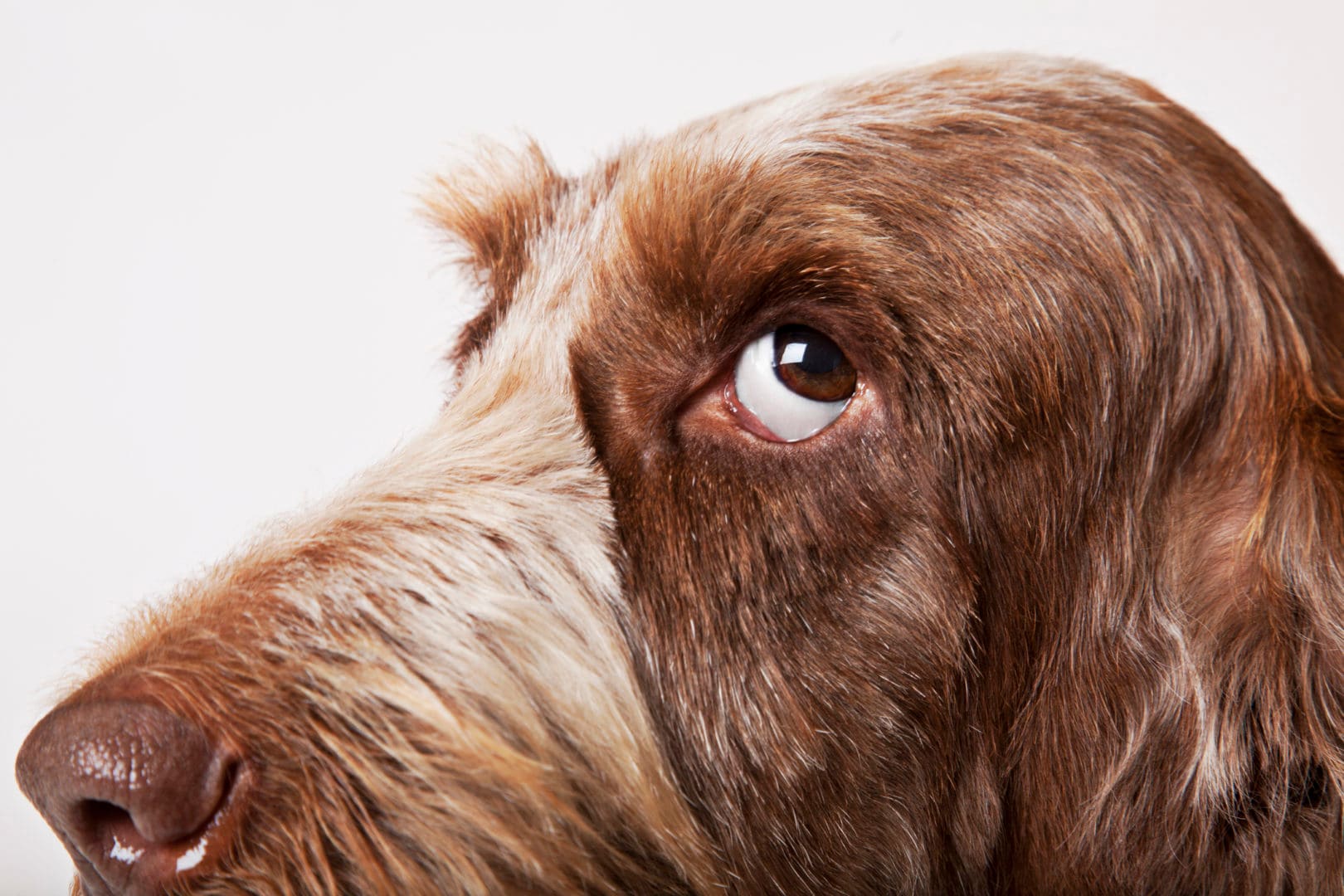You love your dog with all your heart, but canine “issues” like separation anxiety, obsessive behaviors or thunderstorm phobia can be real heartbreakers. All these things can take a toll on your pet and your household, and if your veterinarian has suggested Prozac for dogs as a remedy, you have a decision to make.
Medication like Prozac can help with dog behavior problems that have been medically diagnosed, says Dr. Denise Petryk, a technical services veterinarian in Canada. It can help treat behavior issues that arise from bad life experiences, like abandonment or abuse, but it’s important to know that dog Prozac is not a magic wand.
The antidepressant doesn’t work overnight, and it won’t change behaviors that simply annoy you, like dogs jumping on things they shouldn’t or snagging food off a table. “Prozac for dogs is not for problem behaviors or those things your dog does that bug you,” Petryk says.
“Prozac for dogs is not for problem behaviors or those things your dog does that bug you.”
Dr. Denise Petryk, veterinarian
To help you decide whether Prozac is right for your dog, we asked experts to explain how it works, the pros and cons of giving it to canines, potential side effects and more.
What is Prozac (fluoxetine) for dogs?
Fluoxetine, the generic name for Prozac, is in the class of medications called selective serotonin reuptake inhibitors (SSRIs) that are used in people to treat a wide range of anxiety disorders. Over the past several years, it has been used more and more on companion animals to alleviate their anxiety and decrease their destructive, anxiety-related behaviors. The psychotropic medication can change your dog’s brain action by manipulating its neurotransmitters in a particular way.
How does Prozac for dogs work?
As Tufts Professor Emeritus Nicholas Dodman explains it, Prozac delays the body’s reuptake of serotonin — a monoamine neurotransmitter thought to stabilize mood and contribute to feelings of well-being and happiness — resulting in serotonin persisting longer when it is released. In other words, it’s a serotonin enhancer. This process can thereby help combat things that trouble your dog, like anxiety.
What is dog Prozac prescribed for?
Costing about $4 a month for a medium-sized dog, Prozac can be used to treat the following:
- Aggression.
- Separation anxiety.
- Thunderstorm phobia.
- People phobia.
- Generalized anxiety.
- Compulsive disorders.
- Urine marking.
Most commonly, Prozac is prescribed for dogs with separation anxiety — the sometimes debilitating or destructive anxiety a dog experiences when they are separated from their owner for periods of time. If your dog suffers from this condition, it’s important to seek help.
“Dogs with separation anxiety can suffer from significantly decreased quality of life due to severe stress, in addition to causing physical harm to themselves and their surroundings,” says Dr. Allyson Corr, a veterinarian at Helping Hands in Richmond, Virginia.
“Dogs with separation anxiety can suffer from significantly decreased quality of life due to severe stress, in addition to causing physical harm to themselves and their surroundings.”
Dr. Allyson Corr, veterinarian
It’s important to note that Prozac doesn’t work for every dog. “Prozac usually produces improvement, but sometimes the improvement is not all that is desired,” Dodman says. “In that case, augmentation strategies with other compatible medications can achieve the desired effect. That said, given time and the correct dose, the improvement can be spectacular.”
What are the benefits of Prozac for dogs?
Dog owners can see a number of benefits when their pooch is diagnosed and prescribed the drug.
Using fluoxetine for dogs for dogs can help:
- Reduce aggression.
- Alleviate fear and anxiety conditions, like separation anxiety or thunderstorm phobia.
- Effectively treat obsessive-compulsive behaviors (OCD).
- Shut down urine-marking behaviors in the home.
For the unfamiliar, Dodman explains that OCD behaviors are bizarre, repetitive behaviors that appear to serve no useful function. “The most famous is so-called acral lick, in which mostly large-breed dogs lick repetitively at the wrists or hocks to the point of causing soreness, ulceration and a tissue reaction called granuloma,” Dodman says. “Other canine compulsive disorders include light or shadow-chasing, tail-chasing, rock-chewing, compulsive digging and even compulsive swimming. And there are others. They are all species-typical behaviors that are performed excessively and out of context.”
What are the cons of Prozac for dogs?
Any dog owner who is considering giving their dog this drug should also know the potential downsides.
Drawbacks of using dog Prozac:
- Takes about four to six weeks to work.
- May cause side effects in some dogs (more on these below).
- Can come with a stigma associated with giving Prozac to pets.
- Could theoretically carry the risk of overdose (although extremely unlikely, according to Dodman).
“[Prozac] is a very safe drug, far safer than a lot of other medications that people take without qualms,” Dodman says. “It is true, though, that if you take two serotonin medications together at high doses, the so-called serotonin syndrome theoretically could be triggered.”
Serotonin syndrome is the accumulation of too much of the serotonin chemical in the body, and symptoms include fever, muscle twitching, convulsions and more.
“I have never seen it, and I’ve never heard of it being reported in the vet literature, but it is a theoretical possibility,” Dodman says.
Something else to keep in mind: If you tell someone your dog is taking Prozac, it’s not uncommon to get a raised eyebrow, experts say.
“The stigma is that many people think it’s unconscionable to give human psychoactive medication to a dog,” Dodman says. “They clearly do not understand that it can be life-saving. The same people may shun that kind of medicine themselves, again, for no good reason.”
What are the potential Prozac side effects in dogs?
Dodman, who has used Prozac on animals for more than 25 years, says dogs given the drug could experience light side effects. The fluoxetine side effects in dogs include:
- Reduced appetite.
- Lack of energy.
- Pruritus (itch).
- Anxiety, tremors, restlessness or panting, if given too high a dose.
What are the important first steps with Prozac for dogs?
Before going the Prozac route, Petryk says it’s important to build a relationship with a veterinarian you trust, who knows both you and your dog. “There are many factors that need to be considered before reaching for a pill,” she says, all of which can be talked through with your veterinarian.
Petryk stresses that medications for behavior problems are not a one-stop solution.
“It is important to be aware that this medication may take several weeks to take full effect, and that drug therapy alone is not sufficient to control anxiety in the majority of cases without the addition of a strict behavioral modification program that may include training, desensitization or other methods appropriate for the particular pet,” Corr says.
It’s recommended that you talk with your vet about the benefits of different types of training and behavior modification techniques so you can have a full understanding of all options available to you and your dog. It’s also important for you and your vet make sure your furry friend is not currently on any medications that might have a bad reaction to the introduction of this new pill.

